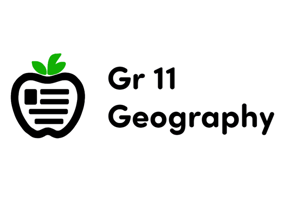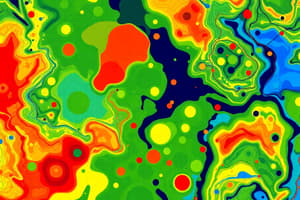Podcast
Questions and Answers
Flashcards
Why is data important to Geographers?
Why is data important to Geographers?
Geographers use data to study and understand the Earth's physical and human characteristics.
How do geographers collect data?
How do geographers collect data?
Data collection methods include visual data like satellite images, precise geographic positions determined by satellite triangulation, high-tech instruments for detecting seismic activity, water volume measurements, climate data collected by thermometers, barometers, and anemometers, and population surveys.
What is a GIS (Geographic Information System)?
What is a GIS (Geographic Information System)?
A Geographic Information System (GIS) uses computer technology to analyze and display geographic data, often from satellite images.
What is Trilateration?
What is Trilateration?
Signup and view all the flashcards
What is Seismic Activity?
What is Seismic Activity?
Signup and view all the flashcards
How do Geographers display data?
How do Geographers display data?
Signup and view all the flashcards
What are graphs used for in Geography?
What are graphs used for in Geography?
Signup and view all the flashcards
What are maps used for in Geography?
What are maps used for in Geography?
Signup and view all the flashcards
Study Notes
Geography and Data
- Global Positioning Systems (GPS) use satellites to pinpoint locations
- Geographic databases contain framework data (e.g., land ownership, transportation, boundaries) and thematic data (e.g., wetlands, landcover, water lines)
- Data is crucial for geographers, enabling them to understand phenomena like earthquake frequency, glacial melt rates, and population demographics.
- Data collection methods include visual data (e.g., satellite imagery), high-tech instruments (e.g., for detecting seismic activity), measuring water volume and speed, using thermometers, barometers, and anemometers for climate data, and surveys for population studies.
- Data triangulation is a method used by satellites to pinpoint locations.
Learning Goals and Expectations
- Geographers understand how data is collected, displayed, and used.
- Geographers analyze various data types to interpret information.
- Methods for displaying data, like graphs, tables, and maps, are considered based on the data's purpose.
How is Data Important to Geography?
- Geographers utilize data to understand diverse topics, from earthquake frequency to resource distribution.
- Data helps ascertain important characteristics like earthquake frequency or intensity, water volumes in watersheds, the pace of glacier melting, population demographics, and the quantities and distribution of various resources.
How is Data Collected by Geographers?
- There are various data types and corresponding methods for collection.
- Visual data, like satellite imagery, is a common method.
- Precise geographic position calculations can utilise satellite triangulation.
- Instruments used for collecting data include thermometers, barometers, and anemometers for climate data.
- Geographers collect data through high-tech instruments that detect seismic activity or surveying populations.
How do Geographers Display Data?
- Displaying data depends on its intended use.
- Data about trends, statistics, and numbers are effectively displayed with graphs or tables.
- Spatial data is displayed using maps.
Ethnic Enclaves in the GTA
- Neighbourhoods in the GTA with a high proportion of immigrants (South Asian and Chinese) are expanding.
- Data is available from 2006, depicting the proportions of various ethnic groups.
Activity
- Students should identify a simple topic related to school, home, or neighborhood.
- Collect data on the selected subject.
- Students prepare and explain their data presentation ideas to the class.
Studying That Suits You
Use AI to generate personalized quizzes and flashcards to suit your learning preferences.




